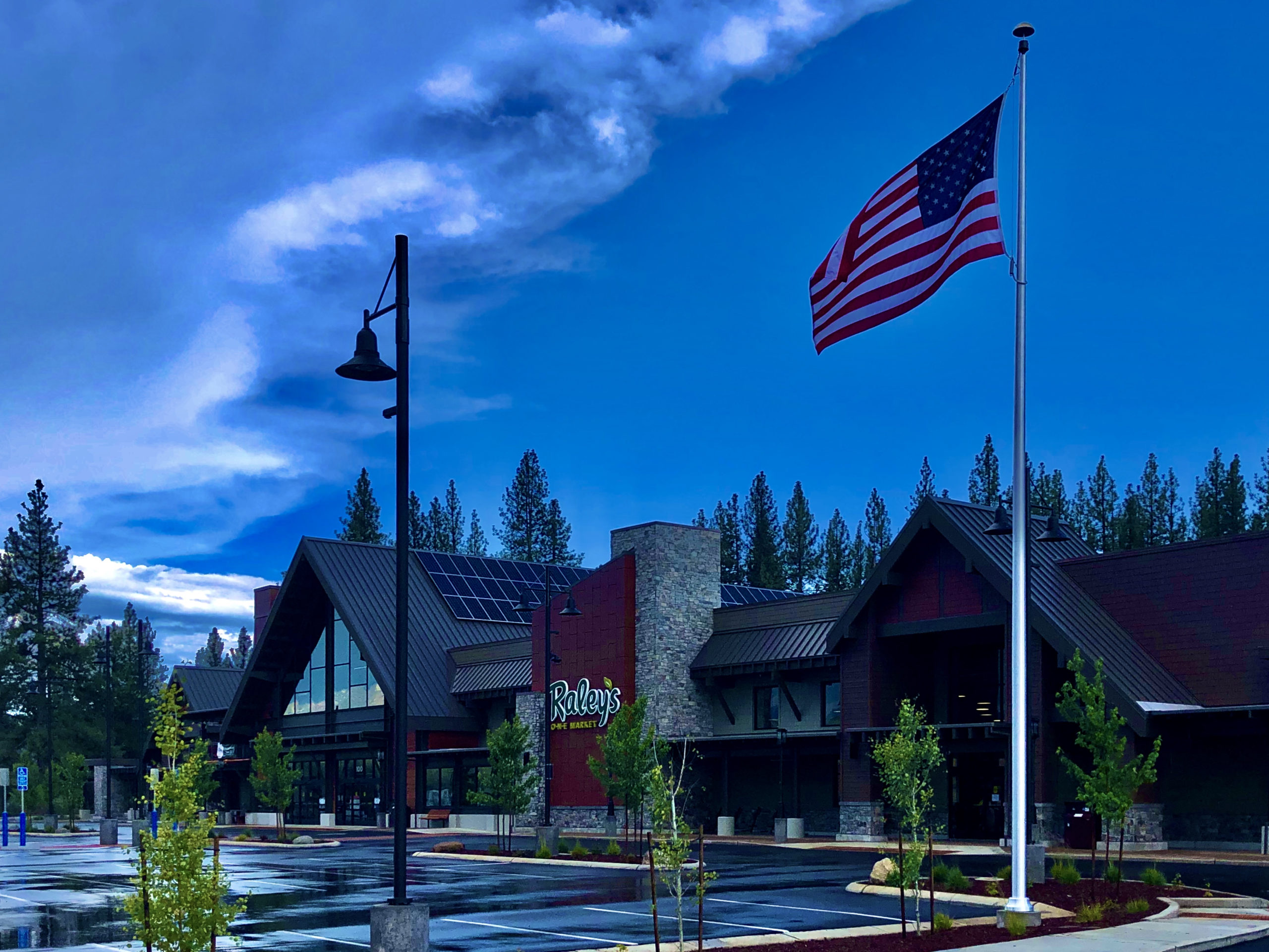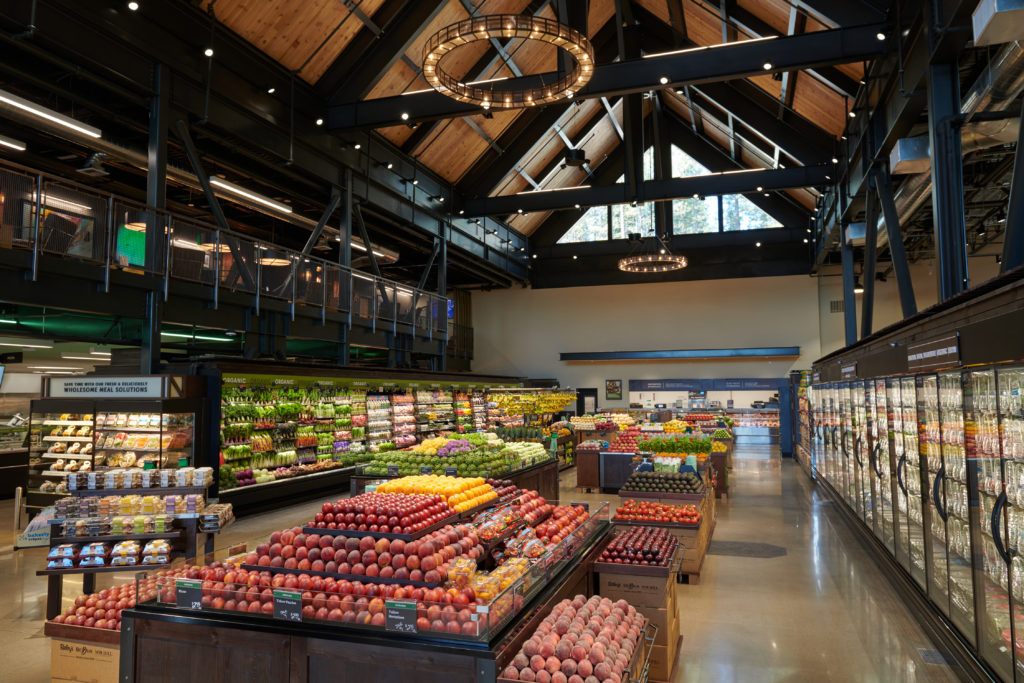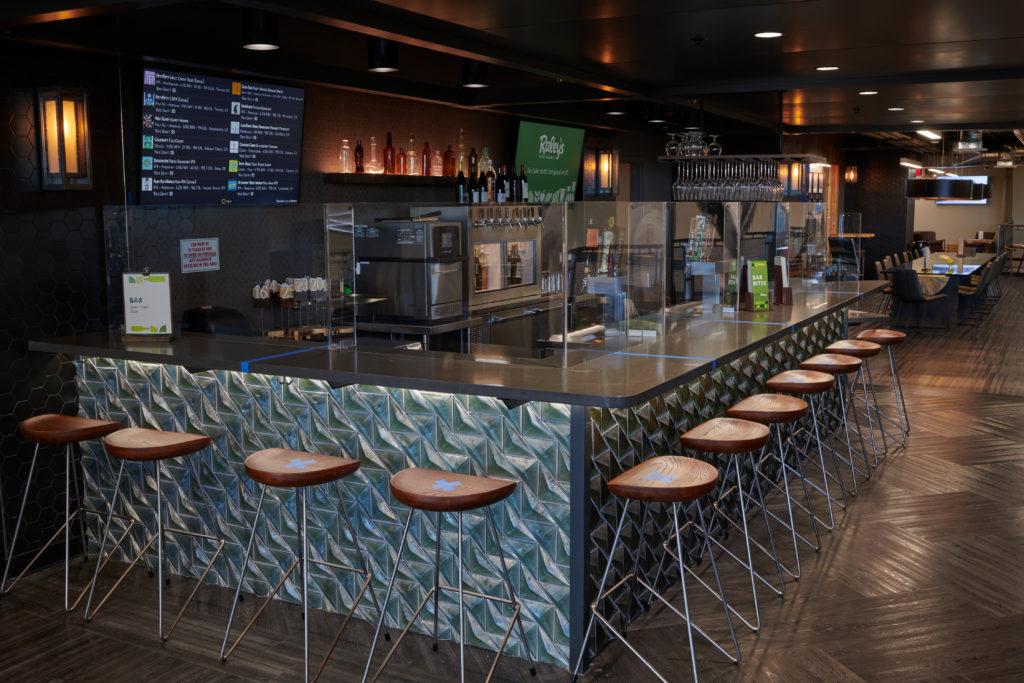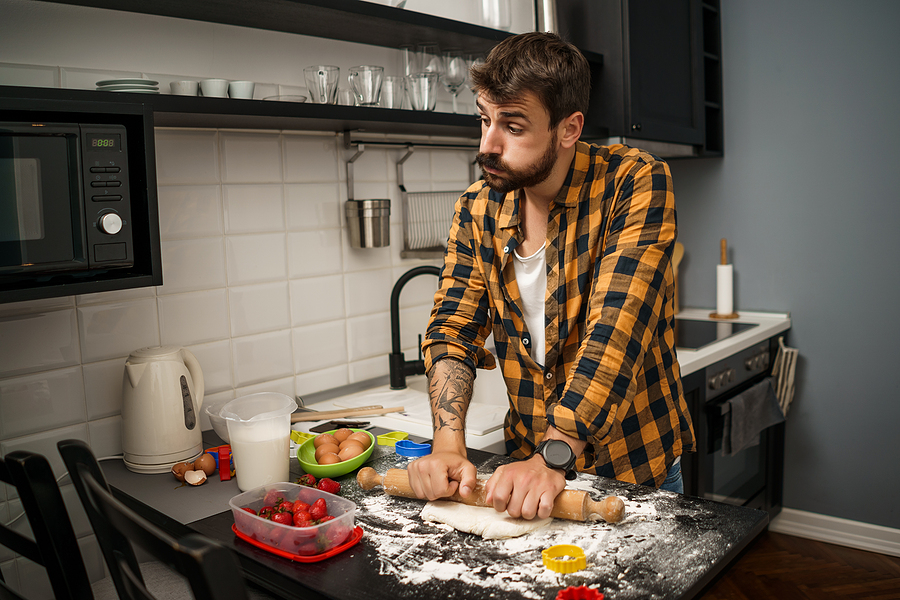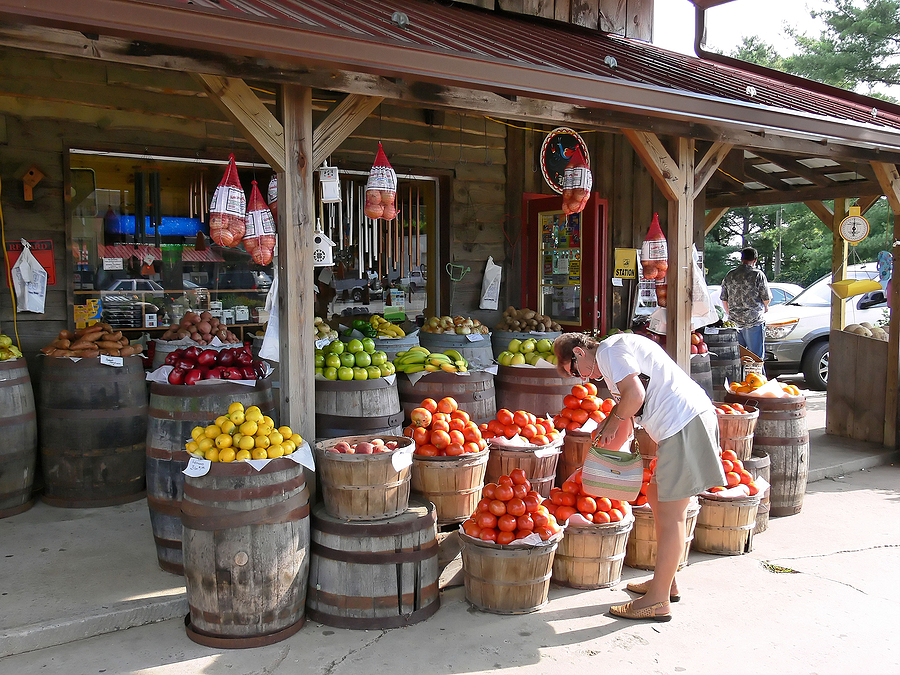
Pandemic launches disruption of modern supermarket model?
October 14th, 2020 Posted by Emergent brand marketing, brand strategy, change, Consumer insight, Culinary lifestyle, Emerging brands, Emotional relevance, food retail strategy, Healthy lifestyle, Higher Purpose, shopper behavior, shopper experience, Supermarket strategy 0 comments on “Pandemic launches disruption of modern supermarket model?”Symphony of logistics becomes an orchestra of societal values
For the last 30 years or more, supermarkets have operated as a highly-choreographed dance of sourcing, merchandizing and value pricing all stage-managed with intricate daily replenishing management of same. It is, in many respects, a remarkable achievement that provides the lowest cost-to-quality food on earth in an assortment depth that is the envy of the rest of the planet. The grocery store has stood as an assurance of food quality and availability, yet now arrives precariously at a moment of transformation that is far beyond the mechanics of coming in-store robots, the challenges of e-commerce friction and assorted home delivery platforms.
Strategic shift underway
Food retail may also be the most visible in-your-face demonstration of traditional brand marketing strategies borne of the post-World War II consumer packaged goods explosion; focused on a more impersonal and product feature-and-benefit form of consumer communication.
A sea change started to emerge in recent years based on an evolving consumer mindset driven about what matters most to them on the path to purchase. Witness the emergence of health and wellness as a primary driver of consumer preference, the attention now paid to transparency and supply chain integrity and a growing concern over food safety practices. All of these emerging trends have eclipsed the traditional purchase motivators of taste, price and convenience.
The Great Pandemic of 2020 pushes the envelope of change faster and farther as consumers not only connect the dots between the quality of the food they eat and their quality of life, but now see retailers and brands as active participants in their social and societal concerns and growing activism.
Two fundamental impacts of COVID 19 on behaviors and attitudes
- The pandemic has served to reveal the inescapable, searing questions of economic inequality, exclusion, racial prejudice and its unfairness while lighting a fire to address and solve these inequities. How this plays out will require sensitivity to the issues and strategic planning to address it openly and visibly in policy, procedure and behavior.
- On another front, at one time consumers aspired to improvement in their lifestyle through status signaling in conspicuous consumption of brands that elicited those feelings of aspirational identity. However, today this has fallen away, shed by a pandemic that has entirely recalibrated what matters to people. Today a brand reputation is enhanced by its social, cultural and environmental values.
Brands and retailers must add responsiveness to a requirement for higher purpose, generosity in behavior and social improvement to their actions. Do you think this transformative insight has fully translated into how brands and retailers package their story and represent themselves in the marketplace? I would say no. Or not yet, while a few are in the starting blocks and getting ready to claim their competitive advantage.
Recasting the supermarket business model
Here we find ourselves in a moment of mechanization. Robots. Digital ordering platforms. Supply chain optimization. Experiments with drones. Electronic grocery carts. Wringing more efficiency in an effort to get product A into hands B more quickly, efficiently and at lower cost.
Nothing wrong with any of this, except it may inadvertently mask the cultural trend changes that argue for a different priority around how supermarkets organize their business for success and relevance to the consumer they need to keep. Technology has its place, but there is a more human need arising that should be considered strategically, as customer-centric planning becomes a top priority.
Let’s go to the ground on this together, where the food culture ‘rubber’ meets the consumer relevance road:
For over a year we’ve been reporting on the shift to home-based meal consumption and cooking. A fair question then: what does the massive pivot to home cooking mean to supermarkets? We’re not talking about the obvious of selling more products, more often for more occasions.
The intimacy people have with food and its preparation is increasing. There’s another form of ‘closeness’ that is percolating underneath as a potential component of retail strategic uniqueness and differentiation – the two components of sustainable business growth.
People buying food from people
You may recall there was an era prior to the maturing of efficient retail when people knew the sellers and makers.
A relevant story: awhile back I had the honor and privilege of meeting Glen Kohn and his business partner at a networking event staged by Chicago’s impressive food brand incubator, The Hatchery. Later during a deeper get acquainted meeting, Glen spoke in detail about his company Prevail Jerky, an emerging super-premium brand of clean, high quality jerky snacks offering an array of culinary forward flavors.
He told the story of how his wife had food allergy challenges. He wanted to make a jerky his wife and family could enjoy. You see Glen was a smoked meat mastermind who had a personal passion for barbecue, smoking proteins and making his own bespoke jerky. He set out to perfect this high protein snack with a recipe that stripped away the legacy bad-for-you allergenic ingredients and use of nitrates, excessive sodium, artificial flavoring and sugars that dogged this dried packaged meat category since inception.
More magical in my opinion is a preparation technique, and he won’t say exactly how he does it, that improves the eating experience by making the meat less tough and chewy. Ultimately what we have here is another improved, higher quality, better-for-you product in a legacy category, with a personal story behind it. In effect, the food quality is guaranteed through Glen’s personal journey.
Even before the Pandemic sent us behind closed doors and placed an even higher premium on human contact, personal relationships were making a comeback. People want to know who the makers of their food are, where they come from, what they are about and how that translates into the product they’ve created.
- Increasingly, we see the aisles at food retail stocked with new brands built by a person, not an R&D lab or innovation department. What was once a hall of impersonal, faceless brands, is turning into a showcase of businesses that acquire their social value through consumers’ desire to support an actual, real-life maker.
Makers bring with them values, beliefs, mission and unique standards of quality that provided deeper meaning past the better recipe. Here’s the strategic twist: while local sourcing has been popularized recently, this nuance stretches the idea further to what we’re calling Local-ism.
People now look at purchases as a statement of what they believe is important rather than flags of social status and prosperity. They are voting their beliefs and values with their wallet. The checkout lane is a voting booth. They are electing product winners with a voice, face and story. The intimacy with food goes deeper. The sense of community building gains a whole new perspective. The store is an aggregation opportunity for these stories-as-brands and a place where they can be brought to life.
- Now retailers have an opportunity to move past the old-school model of being a seller of boxes, cans and bags off shelves at velocity on hyper-thin margins. Food retail can disrupt itself by becoming a form of neighborhood cooking club that respects the environment and the farm while supporting people who craft new food solutions that come to market with a soul. Doesn’t sound like a distribution center for factory food, does it?
What was once impersonal, transactional and formulaic, takes on some of the pastiche of the corner market where the buyer knows the seller, meets the maker and real trusted relationships take root. This is not in conflict with technology and robotics but is rather an important reflection of consumer insight to better guide retail strategy and banner differentiation.
How to think about this: efficiency only goes so far. Becoming a more human-focused business that embraces the emotional investment people have in food, its provenance and related quality is a path to relevance that beats yesterday’s reliance on store location and lower pricing to create competitive advantage. Amazon may have a tougher time with this kind of thinking.
Recommendations on humanizing food retail
- Optimize your aisles and product assortment to feature local and emerging brands with a maker story.
- Use your content creation platform to provide a voice for their stories – and a real, relevant reason for your customers to feel connected to the products they buy at your store.
- Serve this up in a context that works in people’s lives around meal and snack solutions. That’s the foundation for relevance for the food-savvy consumer.
- Marry and merge your indulgent food strategies with better-for-you as the relationship between these two draws ever closer.
- Look past the coupon to start creating other experiences both digital and in-store that showcase your love for food adventure and culinary creativity. Love of food is something you can immediately demonstrate to your shoppers.
When you become highly differentiated, unique and relevant to people, your need to rely on heavy advertising spend to generate traffic declines. When you become remarkable in your shoppers’ eyes, people talk about their experience. Word of mouth is still the most effective form of marketing outreach at your disposal. It is an outcome of remarkable-ness.
Changing perspective may be hard to do because retail traditions and embedded thinking are more about logistics and efficiencies than experiences and food adventures. When the name of the game for decades has been how can we deliver food most cost-effectively – somewhere, we’ve lost sight of the real people who are buying the food – and meeting their needs beyond assortment and price.
When you can see merit in bringing to life the voices and stories of food makers and create ways for buyers to meet them, it lifts your banner above competing mostly on price and product range. That’s a race to the bottom no one wins and plays right into the hands of the endless digital shelf.
A supermarket chain CEO once said to me, “if you walk our office halls on any given day you may find it hard to determine if we’re in the food or hardware business. So much of what we do is too far removed from emotional connections to food and what people use it for.”
You just need to fall in love with food and its ability to transform people’s lives.
If this conversation gets you thinking and you would like to explore it further with like-minded people, use this link to start a conversation without any expectation of a business relationship save we made new friends.
Looking for more food for thought? Subscribe to the Emerging Trends Report.
Bob Wheatley is the CEO of Chicago-based Emergent, The Healthy Living Agency. Traditional brand marketing often sidesteps more human qualities that can help consumers form an emotional bond. Yet brands yearn for authentic engagement, trust and a lasting relationship with their customers. Emergent helps brands erase ineffective self-promotion and replace it with clarity, honesty and deeper meaning in their customer relationships and communication. For more information, contact [email protected] and follow on Twitter @BobWheatley.

